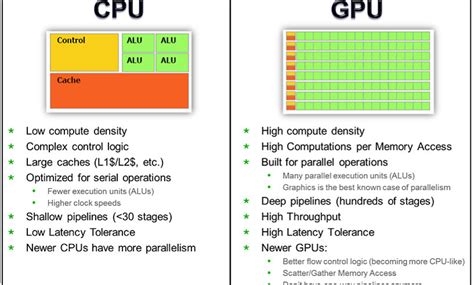Central Processor Unit
The central processing unit (CPU) is a chip that functions as the brains of the computer. It is made of transistors–millions of transistors, in fact. Microprocessors are the circuitry that surround the CPU. The microprocessor is more than the CPU. It contains other processors, for example, the graphics processor unit. Sound cards and network cards are encased in microprocessors. So a CPU is part of a microprocessor, but a microprocessor is more than the CPU.
The CPU
Arithmetic and Algebraic Operations
The CPU has a control unit, a logic and arithmetic unit and registers, plus a small bit of memory called cache. The logic unit processes instructions one cycle at a time. It performs these instructions based on the computer program that it is running. In that sense, the CPU performs individual instructions; and when combined to perform a task, this is a computer program.

The arithmetic unit does math. If the computer program will seek out a mathematical computation, the logic unit sends that instruction to the arithmetic unit to perform the task. Upon completion of the operation, the results get placed into CPU cache or back into the logic unit for further operations.
The control unit controls how and in what order the instructions will be processed.
One final note on a different kind of processor, the vector processor, or array processor. This is a CPU that operates on an instruction set containing one-dimensional arrays of data called vectors. In contrast to a processor known as a scalar processor whose instructions operate on single data items. Today, most CPUs are scalar.
The Microprocessor
Microprocessor
The microprocessor is made of millions of transistors. These are tiny electronic devices that carry an electric charge. They have an on and off switch (or open and close gate) which steers the current through a particular path to produce a desired result.
Microprocessors have traditionally held the CPU. The circuitry of the both devices becomes entwined producing a seamless operation. The microprocessor receives electrical signals from memory, external and internal hard drives, from network cards, from graphics and video devices and from other input devices like a mouse or keyboard.
However, not all electrical currents end up in the CPU. Some signals go to specialized chips that have replaced the CPU. The chips reside on their own microprocessors and process their own results. Nevertheless, the CPU acts as the coordinator where all processed signals, even from different chips, are computed. These are the math operations (on the CPU), or the end results that are displayed, like the network or video or audio operations. So even if there are other performance chips on microprocessors, the result will be processed on the CPU.
The microprocessor is the holding circuitry that connects to the motherboard. The motherboard contains all the different microprocessors, but they work in unison to produce what is known as a computer.
Architecture of the CPU
Microprocessor on Motherboard

Even with new chips on microprocessors, the CPU is still the central processing unit that controls the operations on the computer. This explains why CPU manufacturers spend so much time modifying and extending the processing power of these chips.
Some of the innovations that come about include adding more CPUs to the microprocessor. Intel and AMD both have dual-core microprocessors. This means that they have two CPUs on the microprocessor. They are independent of one another but take the instruction sets from programs and processes them independently but in unison.
Advanced microprocessor’s now have quad-core and six-core architectures and beyond. Twelve and even 48-core CPU microprocessors are in the design stage.
Chips and Microprocessors
The CPU may be the most important processor on the computer, but many tasks have been removed from it and given to other chips.
Graphics processor units (GPU) remove 2D or 3D graphics operations from the CPU. They are used in personal computers, embedded systems, mobile phones, workstations and game consoles.
A network processor unit (NPU) is an integrated circuit designed with a feature set uniquely targeted at the networking operations domain. Internet operations and network feature sets are in the domain of operation. They are typically software-programmable devices and have many generic characteristics similar to general purpose central processing units.
An audio processor unit (APU) is an integrated circuit designed to process audio data to give a clearer and more robust sound to generate. It is stored on a microprocessor on a sound card.
Summary
The CPU is a microprocessor. The microprocessor is an integrated circuit that is made up of millions of transistors. However, not all microprocessors are CPUs. There are NPUs, GPUs and APUs that remove network, graphics or audio processing from the CPU. The end result is a faster CPU performance. The CPU is not slowed down by operations that can be done by outside microprocessors; and since all are working in conjunction, the results are displayed faster, more robustly and with less breakup or downtime.
Gizli Hazineleri Keşfedin
